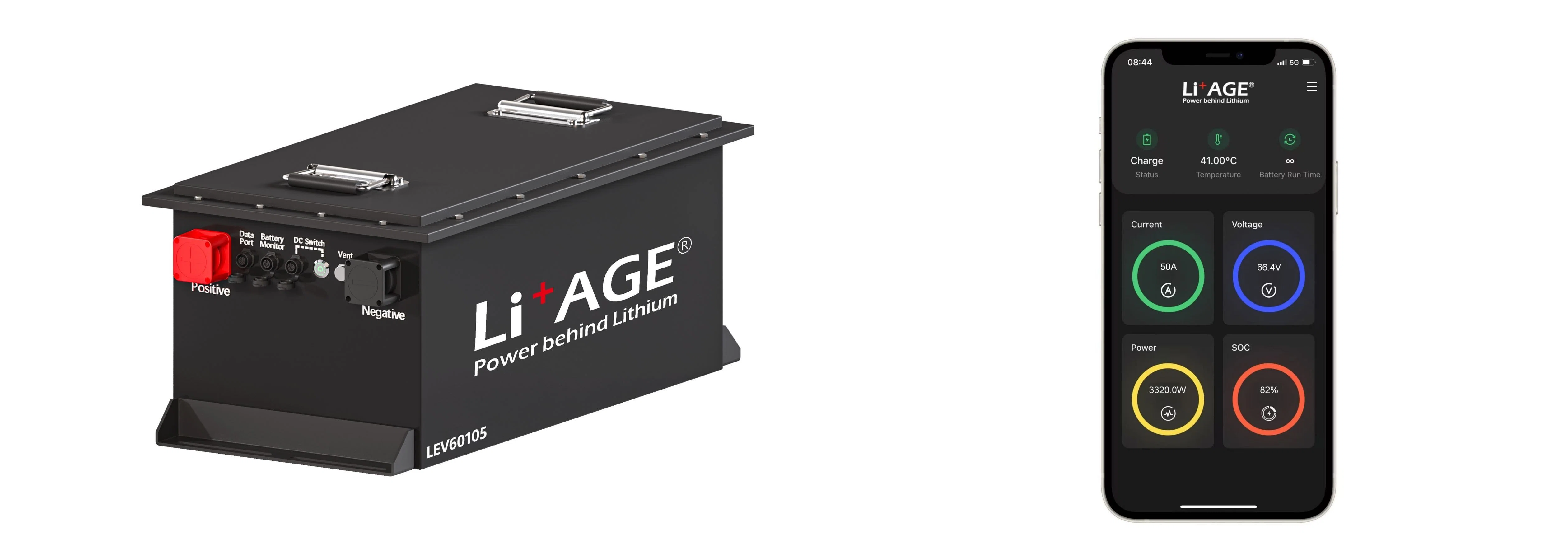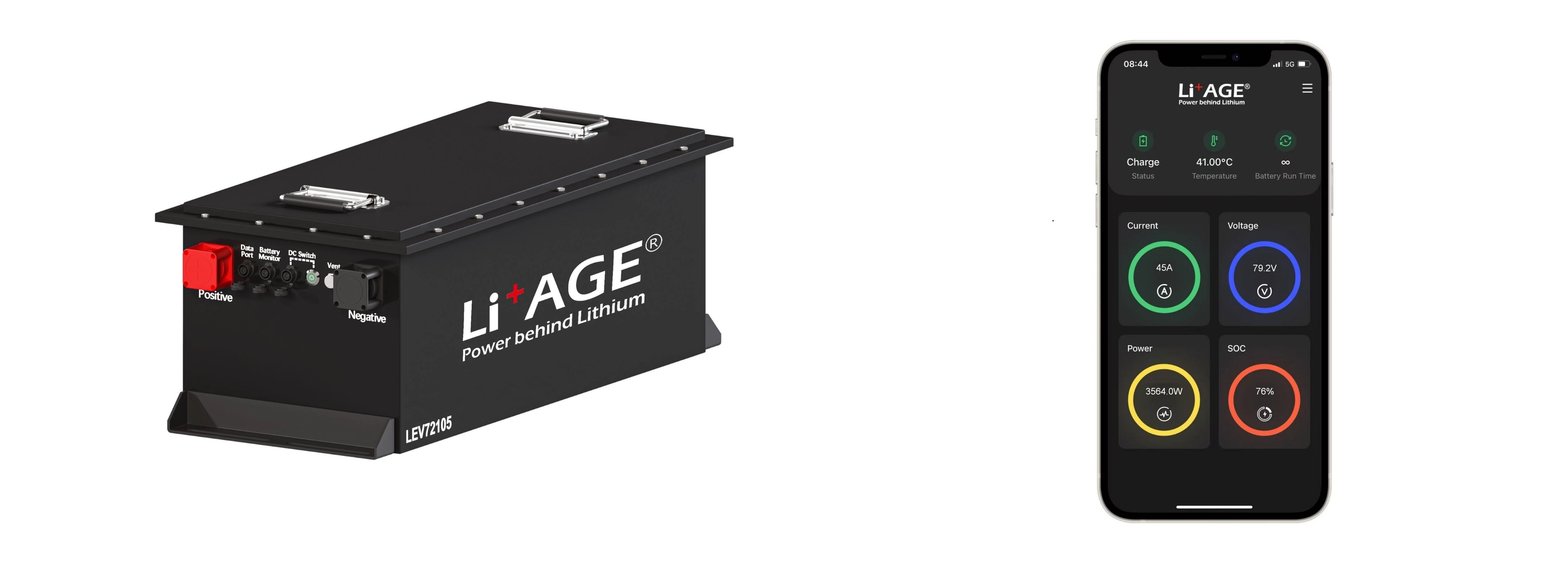DEFORD releases their enhanced 60V, 72V electric tricycle battery systems
Electric tricycles, also known as electric rickshaws or electric tuk tuk, have become increasingly popular in Southeast Asia and Africa in recent years. What are the core issues that consumers are usually concerned about regarding electric tricycles?
1. Is it more economical to use an electric rickshaw than a fuel tuk tuk?
The purchase cost of an electric rickshaw is higher than that of a fuel tricycle, but its operating cst is lower than that of a fuel tricycle. Taking 3 years as a reference, the total cost of an electric rickshaw maybe 25% - 30% lower than that of a fuel tricycle.
2. What kind of battery system should I choose?
LiFePO4 batteries have long cycle life and excellent high temperature performance. Therefore, in the Southeast Asian and African markets, LiFePO4 batteries are undoubtedly the best choice.
3. Is the safety and service life of a LiFePO4 battery guaranteed?
LiFePO4 battery is one of the safest rechargeable batteries so far, and it also has a service life of up to 2000 times. Therefore, the safety and service life of LiFePO4 batteries can be guaranteed.
When electric rickshaws are used for commercial purposes, the reliability of their battery systems must be guaranteed. Because the reliability of the battery system is directly related to the profitability, safety and sustainability of commercial operations, it is the core consideration for the commercialization of electric tricycles. Our team deeply understands this core demand and devotes all efforts to design and manufacture our high-quality LiFePO4 battery systems.
We have optimized the mechanics design of our electric tricycle batteries. While improving the heat dissipation efficiency of cells, we have also enhanced the strength of mechanical structure so that they can easily cope with the challenges of various bumpy roads.
In order to achieve the stable power supply capability of the electric rickshaw battery system under high vehicle load conditions while taking into account battery life and safety, our R&D team has increased the peak discharge capacity of the electric rickshaw battery system by 30% through strategic optimization of the battery management system (BMS) and improved system-level redundancy design, while ensuring the reliability of the battery system throughout its life cycle.
Our new launched 60V (P/N: LEV6010) and 72V (P/N: LEV72105) LiFePO4 battery systems with high cost efficient, which can take clients unparalleled customer experience, significantly improve customers' operational efficiency and help customers maximize their business value.

Part Number | LEV60105 |
Battery Chemistry | Lithium Iron Phosphate (LiFePO4) |
Nominal Battery Voltage (V) | 64 |
Nominal Battery Capacity (Ah) | 105 |
Nominal Battery Energy Capacity (Wh) | 6720 |
Cell Type | Automotive grade prismatic |
Cycle Life | 3000 cycles at 90% DOD, at 25℃ / 0.5C current |
5000 cycles at 80% DOD, at 25℃ / 0.5C current | |
Battery Management System (BMS) | Built-in and integrated |
Charge Voltage (V) | 72 - 73 |
Charge Balancing | Passive, 50 - 80mA |
Max Charge Current (A) | 150 in 30 seconds |
Recommended Charge Current (A) | 20 - 30 |
Reverse Polarity Protection | Applicable |
Discharge Cut-off Voltage (V) | 56 (2.8/cell) |
Continuous Discharge Current (A) | 200 (10%~100% SOC) |
Max Discharge Current (A) | 250 in 6 minutes |
300 in 30 seconds | |
Pulse Discharge Current (A) | 400 in 10 seconds |
External Short Circuit | Prohibition (consult the manufacturer if needed) |
Operating Temperature Charge (℃) | 0℃ - 50℃ (charge will be closed by BMS at <-5℃, or >55℃) |
Low Temperature Charging | Optional (consult the manufacturer if needed) |
Operating Temperature Discharge (℃) | -20℃ - 60℃ (discharge will be closed by BMS at <-25℃, or >65℃) |
Storage Temperature (℃) | -20℃ - 35℃ with 50% - 70% SOC |
Humidity (non-condensing) | 10% - 90% |
Battery Terminals | Threaded Insert - M8 |
Torque: 8-10 Nm | |
Battery Box Material | Powder coated iron case |
Ingress Protection (IP) | IP56 |
Cooling | Natural convection |
Battery Outer Dimensions (L x W x H) | 623 x 326 x 261.5 mm |
24.5 x 12.9 x 10.3 inch | |
Weight | 64 kg / 141.1 lb |
Mounting Position | Upright |
Series, or Parallel Connection | Prohibition |
Communication | Optional (RS485, or CAN2.0B) |
Firmware Upgrade | Host computer software |
Bluetooth 5.0 | LiAGE App |
Backstage Management | Optional (LTE/4G + GPS) |
Remote Fault Diagnosis | By App (under construction) |
Battery Monitor | Optional |
DC Switch | Available |
Power Consumption | Max 1mA in deep dormant |
Application | Electric tricycle, Electric rickshaw, Electric tuk tuk |

Part Number | LEV72105 |
Battery Chemistry | Lithium Iron Phosphate (LiFePO4) |
Nominal Battery Voltage (V) | 76.8 |
Nominal Battery Capacity (Ah) | 105 |
Nominal Battery Energy Capacity (Wh) | 8064 |
Cell Type | Automotive grade prismatic |
Cycle Life | 3000 cycles at 90% DOD, at 25℃ / 0.5C current |
5000 cycles at 80% DOD, at 25℃ / 0.5C current | |
Battery Management System (BMS) | Built-in and integrated |
Charge Voltage (V) | 86.4 - 87.6 |
Charge Balancing | Passive, 50 - 80mA |
Max Charge Current (A) | 150 in 30 seconds |
Recommended Charge Current (A) | 20 - 30 |
Reverse Polarity Protection | Applicable |
Discharge Cut-off Voltage (V) | 67.2 (2.8/cell) |
Continuous Discharge Current (A) | 200 (10%~100% SOC) |
Max Discharge Current (A) | 250 in 6 minutes |
300 in 30 seconds | |
Pulse Discharge Current (A) | 400 in 10 seconds |
External Short Circuit | Prohibition (consult the manufacturer if needed) |
Operating Temperature Charge (℃) | 0℃ - 50℃ (charge will be closed by BMS at <-5℃, or >55℃) |
Low Temperature Charging | Optional (consult the manufacturer if needed) |
Operating Temperature Discharge (℃) | -20℃ - 60℃ (discharge will be closed by BMS at <-25℃, or >65℃) |
Storage Temperature (℃) | -20℃ - 35℃ with 50% - 70% SOC |
Humidity (non-condensing) | 10% - 90% |
Battery Terminals | Threaded Insert - M8 |
Torque: 8-10 Nm | |
Battery Box Material | Powder coated iron case |
Ingress Protection (IP) | IP56 |
Cooling | Natural convection |
Battery Outer Dimensions (L x W x H) | 706 x 326 x 261.5 mm |
27.8 x 12.9 x 10.3 inch | |
Weight | 76 kg / 167.6 lb |
Mounting Position | Upright |
Series, or Parallel Connection | Prohibition |
Communication | Optional (RS485, or CAN2.0B) |
Firmware Upgrade | Host computer software |
Bluetooth 5.0 | LiAGE App |
Backstage Management | Optional (LTE/4G + GPS) |
Remote Fault Diagnosis | By App (under construction) |
Battery Monitor | Optional |
DC Switch | Available |
Power Consumption | Max 1mA in deep dormant |
Application | Golf cart, Electric tricycle, Electric rickshaw, Electric tuk tuk |
About DEFORD New Power Co., Ltd.
DEFORD New Power Co., Ltd. is committed to design and manufacture advanced, safe and reliable battery systems. We are veterans of battery industry, and our core team has more than 20 years battery expertise.
Thanks to our deep understanding to battery technology, battery management system (BMS), and expertise on mechanics and thermodynamics. With the assistance of our advanced manufacturing facilities and cloud-based manufacturing execution system (MES). We do have the ability to guarantee the high quality, safety and reliability of your battery systems.
For any inquiries about battery systems for electric tricycle, electric rickshaw, or electric tuk tuk. Please feel free to contact our sales by info@deford.com.cn.